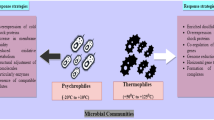Abstract
The rational assembly of microbial communities to perform desired functions would be of great practical benefit to society. Broadly speaking, there are two major theoretical foundations for microbial community assembly: one based on island biogeography theory and another based on niche theory. In this study, we compared a parameter from each theory (immigration rate and sustainability, respectively) to ascertain which was more influential in establishing a functional bacterial population in phenol degrading activated sludge over a 30-day period. Two bacterial strains originally isolated from activated sludge, but differing in their ability to sustain a population in this environment, were repeatedly added to activated sludge reactors at different doses. The resulting size of each population was monitored by competitive polymerase chain reaction. Large, unexpected, yet reproducible fluctuations in population sizes were observed. Irrespective of this, difference in the ability to sustain a population in this environment, overshadowed the influence of 100-fold differences in immigration rate.


Similar content being viewed by others
References
Chase, JM, Leibold, MA (2003) Ecological Niches: Linking Classical and Contemporary Approaches. University of Chicago Press, Chicago, IL
Curtis, TP, Sloan, WT, Scannell, JW (2002) Estimating prokaryotic diversity and its limits. Proc Natl Acad Sci USA 99: 10494–10499
Curtis, TP, Head, IM, Graham, DW (2003) Theoretical ecology for engineering biology. Environ Sci Technol 37: 64–70
Curtis, TP, Sloan, WT (2004) Prokaryotic diversity and its limits: microbial community structure in nature and implications for microbial ecology. Curr Opin Microbiol 7: 221–226
Fernandez, LA (2005) Exploring prokaryotic diversity: there are other molecular worlds. Mol Microbiol 55: 5–15
Hashimoto, S, Fujita, M (1987) Identification of three phenol-degrading microorganisms isolated from activated sludges and their characteristics. J. Jpn Sewage Works 9: 655–660
Hubbell, SP (2001) The Unified Neutral Theory of Biodiversity and Biogeography. Princeton University Press, Princeton
Lee, SY, Bollinger, J, Bezdicek, D, Ogram, A (1996) Estimation of the abundance of an uncultured soil bacterial strain by a competitive quantitative PCR method. Appl Environ Microbiol 62: 3787–3793
Lotka, AJ (1925) Elements of Physical Biology. Williams and Wilkins, Baltimore
Nealson, KH, Conrad, PG (1999) Life: past, present and future. Philos Trans R Soc Lond B Biol Sci 354: 1923–1939
Watanabe, K, Hino, S (1996) Identification of a functionally important population in phenol-digesting activated sludge with antisera raised against isolated bacterial strains. Appl Environ Microbiol 62: 3901–3904
Watanabe, K, Yamamoto, S, Hino, S, Harayama, S (1998) Population dynamics of phenol-degrading bacteria in activated sludge determined by gyrB-targeted quantitative PCR. Appl Environ Microbiol 64: 1203–1209
Watanabe, K, Teramoto, M, Harayama, S (1999) An outbreak of nonflocculating catabolic populations caused the breakdown of a phenol-digesting activated-sludge process. Appl Environ Microbiol 65: 2813–2819
Watanabe, K, Teramoto, M, Harayama, S (2002) Stable augmentation of activated sludge with foreign catabolic genes harboured by an indigenous dominant bacterium. Environ Microbiol 4: 577–583
Acknowledgement
We would like to thank Rob Griffiths and Bill Sloan for discussions and comments on the study. We are grateful to Russell Standish and Nicolas Barraud for making the base line predictions of population abundance. MM was supported by NERC with a CEH nonthematic research grant (GR3/13121) and by the New Energy and Industrial Technology Development Organization (NEDO), Japan.
Author information
Authors and Affiliations
Corresponding author
Rights and permissions
About this article
Cite this article
Manefield, M., Whiteley, A., Curtis, T. et al. Influence of Sustainability and Immigration in Assembling Bacterial Populations of Known Size and Function. Microb Ecol 53, 348–354 (2007). https://doi.org/10.1007/s00248-006-9167-0
Received:
Revised:
Accepted:
Published:
Issue Date:
DOI: https://doi.org/10.1007/s00248-006-9167-0




